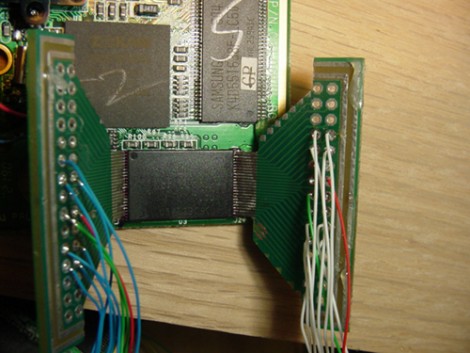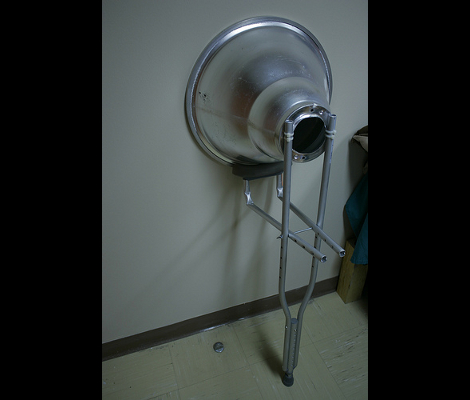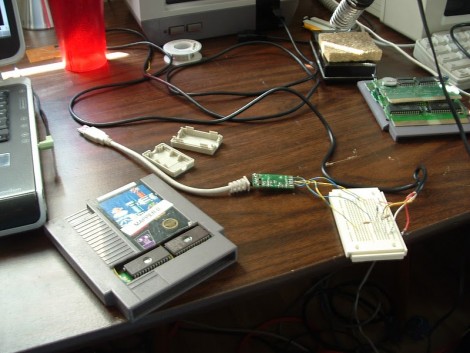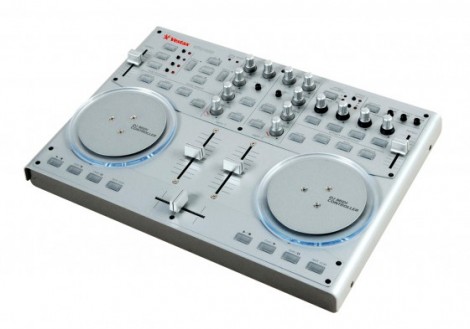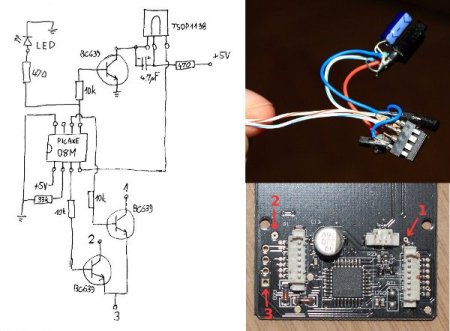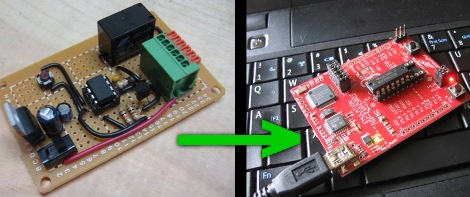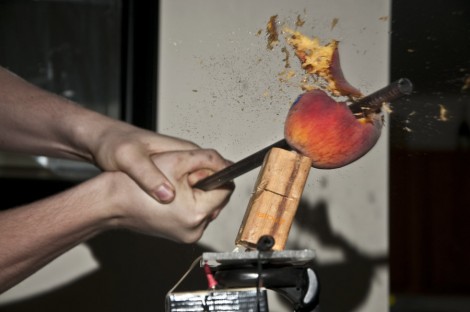Here’s an interesting method of reading data off of a NAND flash chip. Often we see these chips desoldered in order to read and write data, but not this time. This method uses hacked adapters to match the pin pitch of the various chips. Above you see parts of a breakout board cut down to use as wedges. These are drag soldered to the pins of the chip, then the appropriate breakout pins were connected to a Smartmedia card reader, which can read NAND chips. There is also an example showing the flexible connector cable for a DVD rom used as the adapter to solder to a smaller chip. We still looks pretty tricky, but it might be less labor intensive than relocating the flash chip like we saw on that Sega Game Gear hack, as long as you only need to read or write the data once.
[Thanks Laurdy]

